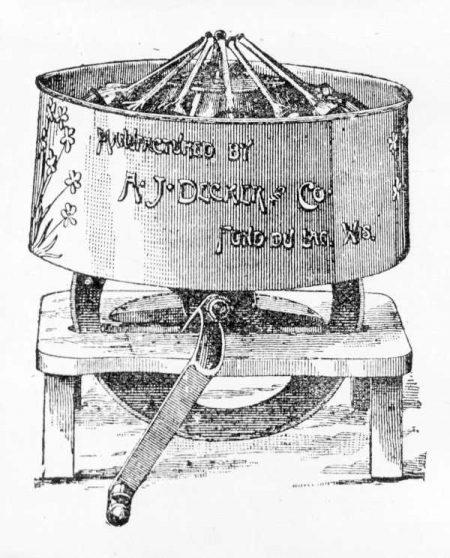Biography View
Biography For Stephen Babcock
If you would like more information about this person, please contact our research library.

Author:
Bill Hart
Background:
The son of Peleg Brown and Cornelia (Scott) Babcock, Stephen Babcock was born near Bridgewater, New York on October 22, 1843. He graduated from Tufts College in 1866, then studied engineering at Rensselaer Polytechnic Institute and chemistry at Cornell University from 1872 - 1875. He received his doctorate in organic chemistry from the University of Gottingen in Germany in 1879.
Accomplishments:
From 1882 to 1887 he was agricultural chemist with the New York Agricultural Experiment Station in Geneva, NY. In 1887 he came to the University of Wisconsin as professor of agricultural chemistry, a position that he held until 1913. During that period he also served as chief chemist of the Wisconsin Agricultural Experiment Station, and was its assistant director from 1901 to 1913.
In 1890 he perfected the Babcock test, a device used to determine the richness of milk by measuring butterfat content. The test was an outgrowth of necessity, as is so often the case with inventions. Dairying was becoming an important industry in Wisconsin, and its future depended on an accurate and easy method to determine the intrinsic value of milk. When presented in 1890, the test brought international recognition to the University of Wisconsin. Here he established a laboratory that carried out pioneering research in nutrition and in the chemistry of vitamins. Babcock's experimental studies in the food requirements of animals paved the way for the work of the American chemist Elmer Verner McCollum (1879-1967) on vitamin A, and it was in "his" laboratory at the university the biochemist Harry Steenbock discovered vitamin D, the sunlight vitamin. Babcock invented an apparatus to determine the viscosity of liquids. The last two decades of his life were spent doing basic research on the nature of matter and its relation to energy. The Babcock test provided a fast, easy way to test the quality of milk. The test discouraged tampering with or diluting milk for profit, and it helped develop improved strains of dairy cows. The invention, which he refused to patent, was widely acclaimed and won grand prizes at the Paris (1900) and St. Louis (1904) expositions. Interestingly, Mr. Babcock felt that he should derive no personal gain from his testing device, his most famous invention. He also refused to take a cent for anything else he did that might benefit humanity. Fame came to Mr. Babcock because he could not avoid it. Not a fluent speaker, he always tried to get out of making speeches.
On October 27, 1896, Stephen Babcock was married in Winfield, NY to Miss May Cornelia Crandall,
In 1897 Mr. Babcock helped develop the "cold storage" method of curing cheese. He did much of the lab work involved in improving cream separators and, in 1900, began his experiments on nutritional needs of cattle. These "hidden hunger" tests led to the discovery of vitamin A by others. Mr. Babcock also invented a device to test the viscosity of liquids, and worked on an apparatus for the pasteurization of milk. From the time of his retirement in 1913 until his death, Mr. Babcock worked in his university laboratory on the problem of the nature of energy in its transference through ether. He also conducted important research on the dietary needs of livestock.
In 1901, Wisconsin governor, Robert Marion La Follette, presented Mr. Babcock with a bronze medal from the Legislature as a testimonial for his service to the people of Wisconsin.
Stephen Babcock died in Madison, Wisconsin on July 2, 1931. He is buried in Forest Hill Cemetery in Madison, WI.
Other Information
View All Photos


